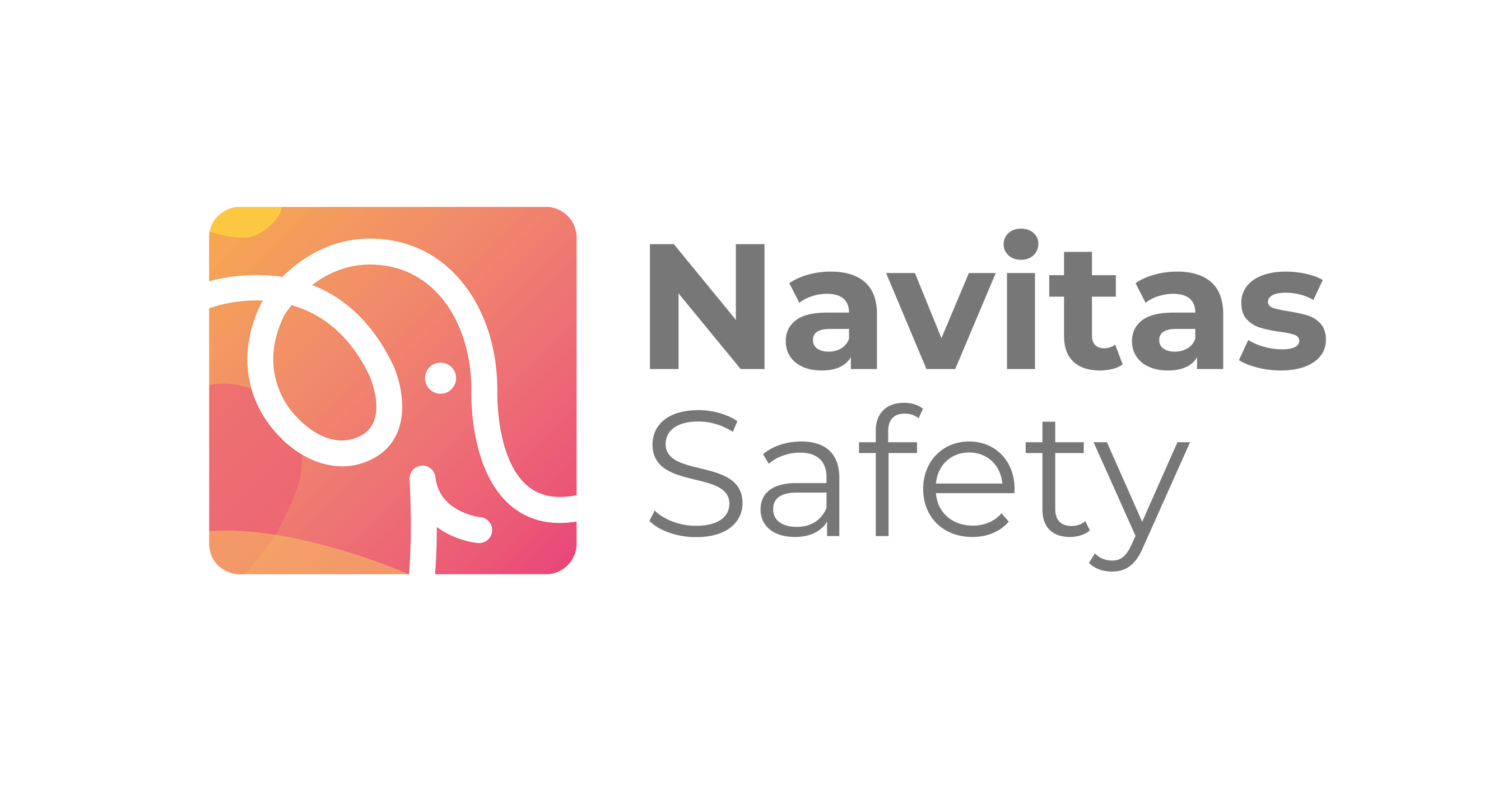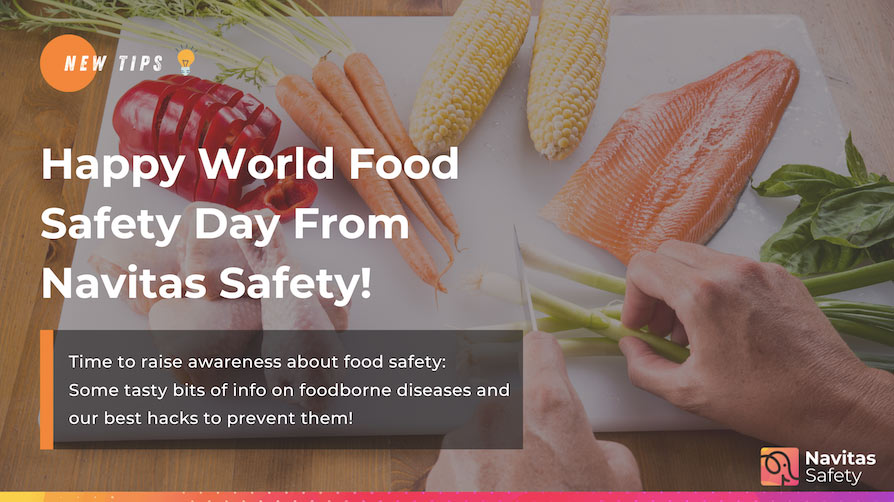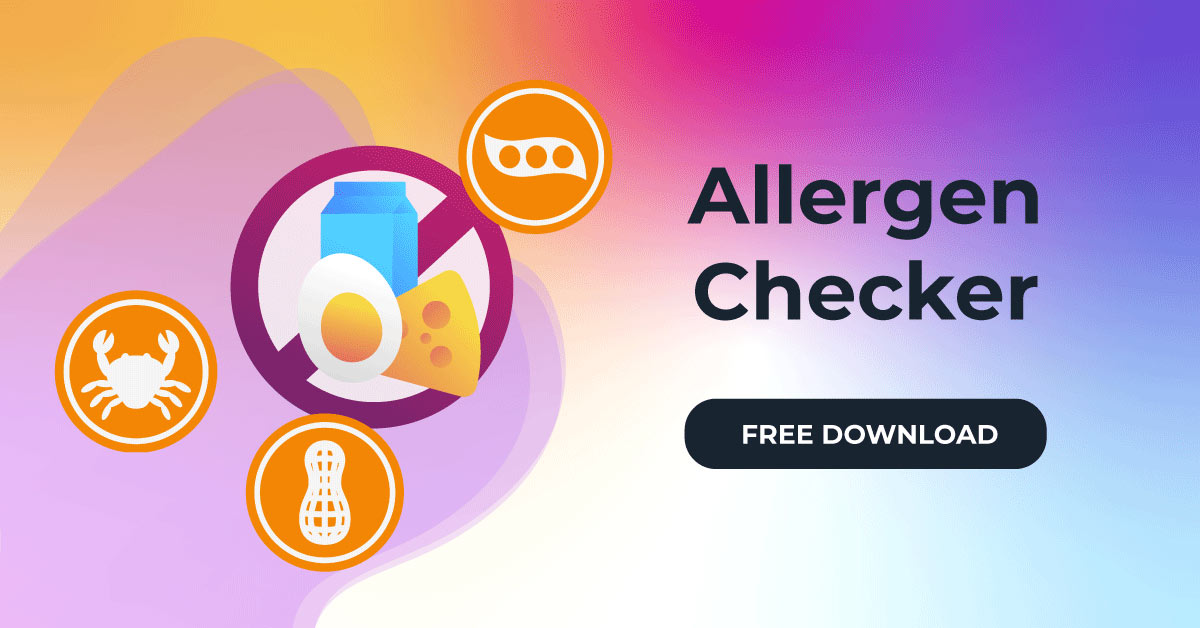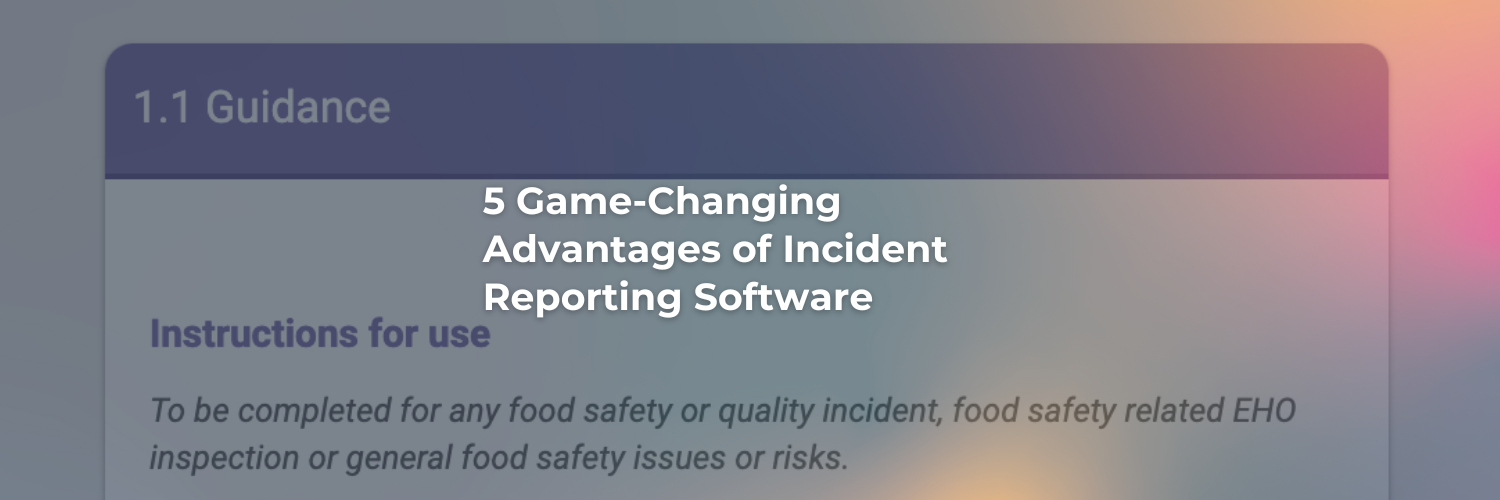Time to grab your party hat and kitchen top cleaning product! Oh, and don’t forget a quick check on your fridge temperature to kickstart World Food Safety Day properly.
It’s June the 7th – a big day for hospitality businesses, food suppliers, producers, NGOs and many more. Launched by the World Heath Organisation, the World Food Safety Day aims at raising awareness about the risks of foodborne diseases and the importance of core food safety practices.
Curious to find out more?
The good news is that there is no need to be Food Safety Level 2 certified! Read along as we have some simple but tasty tips for you to nail food safety.
What is food safety and hygiene?
Food safety encompasses practices and workflows ensuring that food is safe to eat. Foodborne diseases are still a huge issue worldwide, threatening populations’ health and also local economies. When food isn’t stored, transported, prepared and cooked properly, harmful bacteria and parasites can endanger our health. If washing your kitchen knife thoroughly after preparing raw meat sounds like effort to you, be aware that this single food safety miss could lead to serious food poisoning.
Contaminated food can lead to mild symptoms such as headaches or a fever, but also to more serious life-threatening conditions. So whether you are a chef, food truck owner or a home cooking enthusiast, ensure you tick all the food safety boxes to keep your people and yourself safe – and not just because today is World Food Safety Day!
A few figures on food safety risks
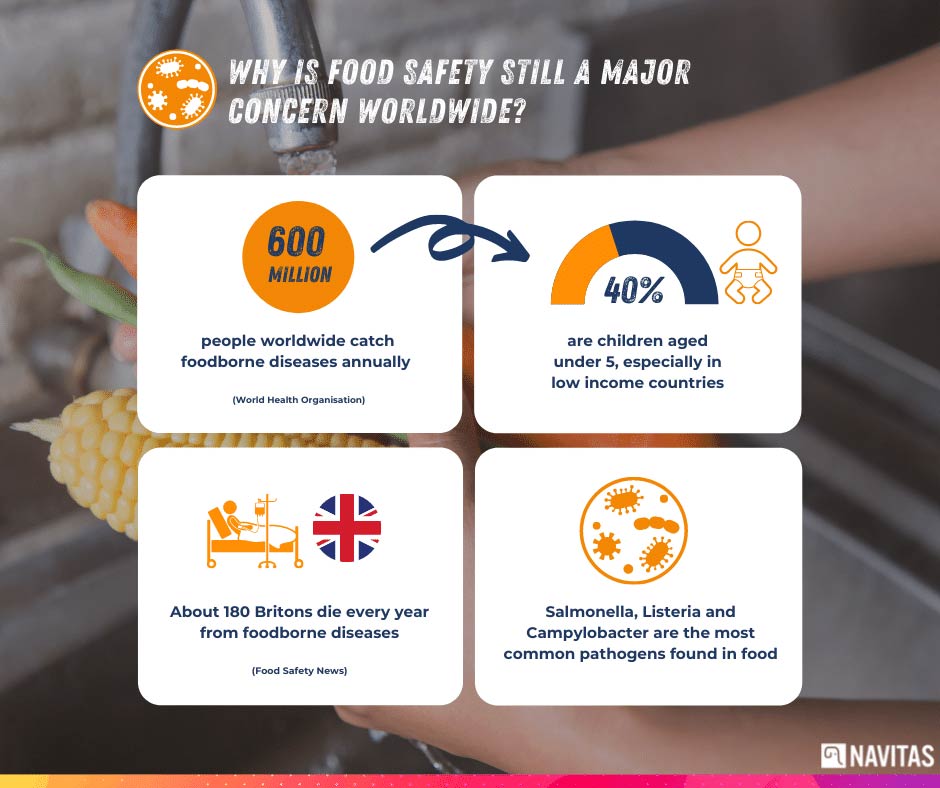
The World Health Organisation reminds us that foodborne illnesses still affect 600 million people around the world annually. In other words, 1 in 10 people get sick every year from contaminated food – with 40% being children under 5. Indeed, children and the elderly are specifically vulnerable. This is even more true in low-income countries. Whilst symptoms can remain mild for some with fever and abdominal pain, some food contamination cases can lead to diarrhoea, meningitis, cancer and also death. Sadly, 420,000 people still succumb to foodborne diseases annually.
Let’s have a closer look at the UK. It’s been estimated that 180 Britons die every year from a foodborne illness linked to a range of 11 pathogens. Salmonella, Listeria and Campylobacter are the most common. A slightly more worrying figure is the annual 2.4 million cases of foodborne illness occurrences just in the UK – as found by the Food Standards Agency. This emphasises a general lack of awareness of food safety practices.
If these numbers look scary to you, it's time to cheer up!
Most of it can be prevented and this is why today we celebrate World Food Safety Day. Navitas Safety is joining the WHO to help raise awareness of food safety and hygiene best practices. Let’s keep everyone safe together!
What are the typical food safety incidents to look out for?
The WHO recognises about 200 different foodborne diseases. These can come from harmful bacteria, parasites, viruses and/or chemicals. Such contaminations can occur on several food types such as seafood, raw meat, eggs, unpasteurised milk, fruits, vegetables and also cereals. In other words, there’s no exception really, stay alert and keep up with 5* food hygiene practices! It’s time to get familiar with typical food hazards. Let’s have a closer look at the most common food safety and hygiene risks:
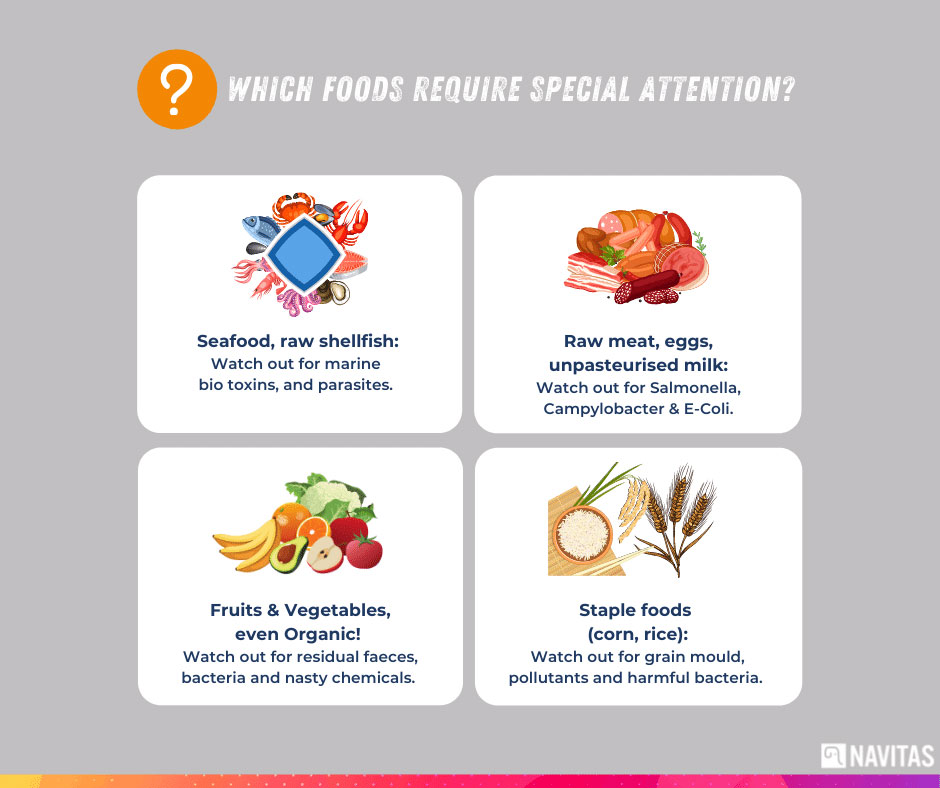
Raw seafood
Some raw shellfish may have naturally occurring marine bio toxins. So ensure thorough washing and cooking to mitigate contamination risks. By doing so, you also protect your food from bacteria or viruses such as Hepatitis A. Unwashed seafood could also come with its lot of bad surprises like fishborne trematodes – a seafood parasite that can threaten consumers’ health.
Fruits & vegetables
Unwashed fruits and vegetables can pose a health danger due to residual faeces on their skin. That’s why meticulously washing your fruits and veggies (even if organic!) is essential to remove potential bacteria (typically E. coli) and also any remaining soil. We’ve all experienced that not-so-good soil-flavoured crunchy fruit bite! Never again, please.
Even if eating insects is becoming trendy, let’s wash our veggies as worm parasites aren’t quite on the menu yet! Keep in mind fruits and vegetables can also be exposed to chemicals and pesticides which can have a long-term negative impact on human health. So get washing!
Raw meat and eggs
Manipulating animal products is a tricky exercise that requires methodical food safety practices. Eggs, poultry and raw milk tend to be key carriers of pathogens like Salmonella, Campylobacter and E. coli. Such bacteria can lead to fever, nausea, vomiting, abdominal pain and diarrhoea so let’s keep everyone safe together!
Make sure to carefully separate raw meat from other food at all times – including for storage. Watch out for undercooked pink meat that could still pose a food safety risk too (Hepatitis A and other viruses). Implementing a clear 5* cooking and safety routine is essential!
Cereals (rice, millet, corn)
Food safety risks don’t just stop at poultry and seafood! Indeed, rice and millet have previously led to bacteria outbreaks such as cholera. Staple foods are therefore no exception, namely due to their long-term exposure to pollutants and toxins such as grain mould. These are called aflatoxin or ochratoxin – a note to all the food safety nerds out there! Over-consumption of such pollutants can damage our immune systems in the long-term and even trigger some cancers. So once again, rinse, cook and store all your foods safely.
Our top tips for a positive food safety culture
We have some good news again. Most foodborne diseases are actually preventable with the right food safety practices in place! Implementing rigorous hygiene routines is one essential step. In addition, we would recommend having a clear food safety hazard management system to protect everyone. As advocated by the WHO, food safety is everyone’s business. From farmers and producers to food handlers and sellers, we must all be aware and play our role in the mission of ensuring total food safety. Even at home with our friends and family (and pets!) 😉🐶
Here’s a list of our top hacks to implement a positive food safety culture around you:
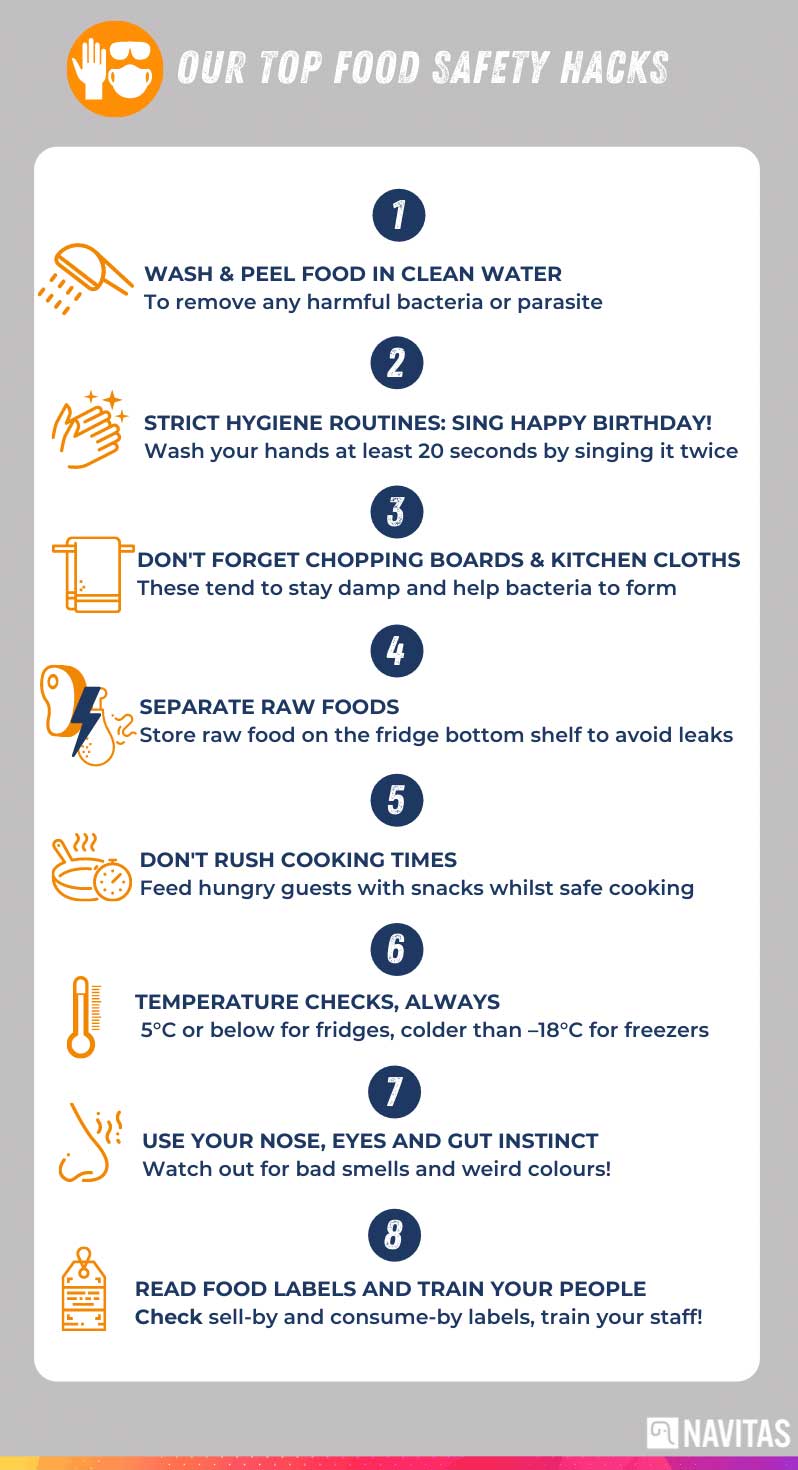
1. Wash & peel
Wash in clean water (and peel if necessary) raw foods like fruits and vegetables. This will help prevent contamination from pathogens and chemicals. There’s a debate around washing raw meats. Most sources would advise you not to do so. Indeed, washing raw meats could actually spread even more germs and pathogens in your kitchen sink if strict disinfection isn’t respected afterwards. Other studies have however shown that using acidic solutions such as vinegar or lemon juice could help reduce bacteria on raw meat.
2. Strict hygiene and cleaning routines
Ensure you (and your staff) thoroughly wash your hands before, during and after manipulating food. Especially with raw food such as meat and seafood. 20 seconds is considered as a bare safety minimum. Some like to sing ‘Happy Birthday’ at least twice for a more in-depth cleaning. Ideally, you should wash your hands in a dedicated sink in which you do not clean equipment. Finally, drying your hands on disposable paper roll or air dryer is considered as safer than kitchen cloths to curb contamination risks even further.
3. Don’t forget chopping boards and kitchen towels
Keeping EVERYTHING clean – a golden rule of safe food handling. In addition to cleaning your kitchenware and kitchen tops, don’t do this classic: forgetting chopping boards and kitchen towels. These tend to stay damp and can promote bacteria proliferation. Ew! Not something you want to hear on World Food Safety Day!
4. Separate raw food
When preparing, cooking or storing meals, always ensure a strict separation of raw food (especially meat) from the ready-to-eat food. We recommend storing raw meat on the lowest fridge shelf to avoid leaks. Finally, preparing raw food on assigned chopping boards and then meticulously scrubbing them is key before touching any other food. No more cross-contamination!
5. Don’t rush cooking times for hungry guests and clients!
Follow cooking instructions so that food is cooked enough to kill any bacteria or virus. Try not to miss this food safety tip even when all your guests or clients are starting to get hungry and impatient! Stock up on snacks to keep them waiting whilst you focus on safe cooking.
6. Temperature checks, always!
Regular temperature checks on your fridge(s) are critical! There’s no off-season for temperature-induced food poisoning so be thorough. It’s recommended to keep your fridge(s) at 5°C or below and your freezer(s) colder than –18°C. Do not refreeze defrosted food and keep in mind “first in first out” with food stocks!
7. Use your eyes, nose and gut instinct!
Even if your temperature checks are compliant, use your eyes, nose and instinct to tell whether food is safe to eat or not. Watch out for bad smells (e.g. sulphur for bad eggs), mouldy and blue or grey colours on meats. Sometimes trusting your gut is the best safety tool!
8. Understanding food labels
Reading a food label is one thing. But understanding it can be tricky! Make sure you acknowledge key information on food labels, including the ‘sell by’ date and ‘consume by’. There are plenty of resources online to explain food labels and which food types can be kept a bit longer after the expiration date.
Make informed choices with your food by also checking allergens on labels. If you are a foodservice business, how confident do you feel in your allergen management? Allergen printers help you streamline your processes and ensure full accountability and allergen traceability. Worth a look here!
Because we like to make your life easier check out our quick and easy allergen checker. It’s free to download and use. All you need to do is uploading your menu.
9. Train your people
Food safety practices constantly evolve and it’s important to stay up-to-date. Empower your team with fun and convenient online food safety training to protect your brand and nail a lovely 5* star hygiene rating. Navitas Academy offers a wide range of CPD-accredited courses including Food Safety and Health and Safety L1, L2 and L3, and Covid-19 management. Explore more about our courses here!
Not too sure which course is best for you? Explore our guide here! 🧡
Digitalising food safety management for total confidence
To celebrate World Food Safety Day, the WHO recognises the high potential of digitalising food safety systems. This applies to any business serving or dealing with food. Whether you are a coffeeshop, care home, college, hotel or even a motorway station – paperless food safety is a key ally. It allows you to have full visibility on your processes and total safety peace of mind. Oh, and it’s eco-friendly!
Digital checklists and 24/7 temperature monitoring will help streamline food safety whilst making your life easier. Additionally, cleaning routines will be clear and digitalised so that staff never miss a deadline and everyone can be accountable. Also, cross-contamination will be avoided at all times. Winning, right? 😌
Did we pique your curiosity? Find out more about how digital food safety can help!
Join the #WorldFoodSafetyDay with us!
Join us on this great mission by sharing your top hacks in the comments and on social channels. Let’s celebrate together how hospitality can contribute to safe food today for a healthier tomorrow!
We hope this was insightful. Navitas is a one-stop partner for everything food safety. We make it all easy, convenient and paperless. Fancy a quick chat to tell us about your needs?
